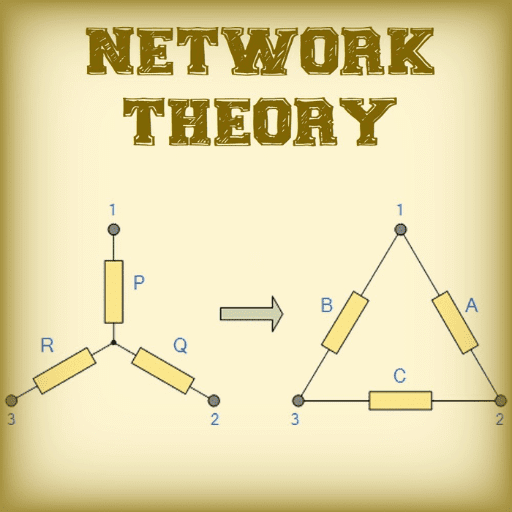Reference Material: Political Science | Political Science Class 11 - Humanities/Arts PDF Download
PaperI: Indian Constitution at Work
Unit -1: Constitution
Sub-Unit: Constitutional Amendments
- As of 2021, there have been total 105 amendments of the Constitution of India.
Unit - 2: Election and Representation
Sub-Unit: ‘Electoral Reforms in Indian Politics’
- Electoral Reforms in the 21st Century include use of EVM [Electronic Voting Machine], VVPAT [Voter Verifiable Paper Audit Trail] and NOTA [None of the Above]. Restriction on exit polls, ceiling on election expenditure (Rs.50- 70 Lakhs forthe Lok Sabha election and Rs. 20-28 Lakhs for the Assembly election) and the use electoral bonds in election funding are some of the major reforms initiated by the Election Commission of India that have sought to bring about revolutionary changes in the electoral process and the voter behaviour in contemporary India.
Unit- 5: Judiciary
Sub-Unit: ‘Judicial Over reach’
- When judiciary assumes the roles and functions of the legislature and executive, thus diluting the concept of separation of powers, it becomes judicial overreach. Unrestrained activism on the part of judiciary often leads to its overreach.
- We all know that Article 142 and judicial review have been put to many constructive uses but some actions like declaring the NJAC (National Judicial Appointment Commission) unconstitutional as it tried to apply checks on judicial power highlight the need for judicial restraints in the exercise of judicial review.
Unit- 6: Federalism
Sub-Unit: ‘Quasi Federalism’, ‘Cooperative Federalism’, ‘Competitive Federalism’
- Quasi Federalism: In the context of special features and provisions of Indian federalism we use the phrase, ‘Quasi Federalism’, a concept given by K. C. Wheare. Quasi federalism represents a strong centre with comparatively less strongerunits. Wheare describesthe Indian case in itsformative phase as a ‘quasi federation – A unitary state with subsidiary federalfeatures rather than a federal state with subsidiary unitary features’.
- Cooperative Federalism: Cooperative federalism is the concept which reflects the relationship between the Union and theStates where both come together and resolve the common problems with each other’s cooperation in amicable manner thuscontributing towards the growth of a strong federation. It shows the horizontal relationship between the Union and the Stateswhere none is placed over and above on the other. To ensure this strong relationship between the two, the Indian constitutionhas evolved and incorporated certain instruments and agencies like the Inter-State Councils, Zonal Councils, the 7th Schedule, etc.
- Competitive Federalism: Competitive federalism places all states vis a vis the Union on equal and competing footing wherethe best performing states can take the maximum benefits of the resources, services and taxes. It ensures a healthy competition among states leading towards better performance and delivery which constitute important part of governance. The postliberalisation era reflects the trend of competitive federalism where states are more autonomous, accountable andefficient in their functioning.
Paper II: Political Theory
Unit-2: Liberty
Sub-Unit: ‘Liberty vs Freedom’
We hear a lot around us that people appear to use the word liberty and freedom as synonyms of each other. But there are some fundamental differences between these two concepts that must be understood. Liberty comes from the Latin word “libertatem” which means “condition of a freeman”. While freedom come from the English word “freodom” which means “state of free will”. Liberty is power to act and express oneself according to one’s will while freedom is the power to decideone’s action. Freedom is more concrete concept than liberty which is more associated with an individual’s connection withthe state rather than with other individuals and circumstances. State guarantees freedom through the liberty it grants to its citizens.
The difference between these two concepts can briefly be outlined as follows: The common feature between these two concepts is that both remain unconstrained, which means that their realization is free from any constrain. Further, both follow rightful or ethical conformity in terms of their realization.
The common feature between these two concepts is that both remain unconstrained, which means that their realization is free from any constrain. Further, both follow rightful or ethical conformity in terms of their realization.
 |
Download the notes
Reference Material: Political Science
|
Download as PDF |
Unit-4: Justice
Sub-Unit: ‘Different Dimensions ofJustice’
Till now we have tried to understand what the term justice means. After considering this, we need to know different dimensions of justice which may help us in establishing a just society. Legal, social, political and economic justice are the key dimensions of justice. Here, we will try to understand these dimensions in some details.
- Legal Justice: It is a narrow concept of justice which is associated with the legal system and legal procedure existing in a society. The court of law interprets the law and applies it after hearing the partners involved in a dispute. Here, justice is what administered by the court of law and the interpretation of the judge is considered to be an embodiment of justice.
- Political Justice: In any democratic society political justice means providing equal political rights. Political justicestands for a free and fair participation of people in the political sphere. Universal adult franchise is the expressionof political justice. Equality of opportunity in getting elected and in holding public offices, freedom ofexpression and association are important pillars of political justice.
- Social Justice: It means to end all types of social inequalities and to provide proper opportunity to every citizen inevery sphere of life, to develop her/his personality to ensure equality of law, prohibition of discrimination, social security, provision of equal political rights, etc. The concept of social justice is based on the belief that all humanbeings are equal and no discrimination should be made on the ground of race, religion, caste, gender and place ofbirth.
- Economic Justice: It means to provide equal opportunities to everyone to earn her/his livelihood. It also means to help such people who are not able to work and earn their livelihood. The basic need of every person such as food, cloth, shelter and education should be fulfilled. It stands for by assuring adequate means of livelihood to all,by making provisions for equal pay for equal work, fair distribution of resources, equal economic opportunityto all, etc.
While the concept of political justice is closely linked with the ideal of “liberty”, economic and legal justice with “equality”and social justice with “fraternity”, a just combination of all these four dimensions will help in achieving justicein life.
Unit-5: Rights
Sub-Unit: ‘Human Rights’
- Human rights are those rights which all human beings are entitled by virtue of being human. It is based on the principle of respect for the individual. The fundamental assumption behind the concept of human rights is that every person is amoral and rational being who deserves to be treated with dignity. Human rights are both universal and fundamental; these are universal in the sense that they belong to all human beings irrespective of race, nationality, community, religion, gender, etc; these are also fundamental because once given, these cannot be taken back.
- Although the presence of human rights can be traced to the ancient Indian philosophy and culture, the concept formally originated at the international level in 1948 with the UN Declaration of Human Rights listing 30 rights for all people across the globe.
Unit-7: Nationalism
Sub-Unit: ‘Multiculturalism’
- Multiculturalism in the general sense is the coexistence of people of different religions, cultural groups and communities inall countries of the globe. Originated in the 1970s with a counter-culturalism and human rights movement in opposition tothe homogenization of other cultures in favor of the white culture of America and Europe, multiculturalism broadly comprises the principles of both ‘acceptance’ and ‘reverence’. It expects all countries of the globe to give equal acceptanceand reverence to the cultural groups. In the India context, the concept of multiculturalism is identified with the notion of "Salad Bowl", advocated by social scientist, Ashish Nandy. It shows that different cultural groups within a nation maintaintheir identity with their respective distinct forms.
|
43 videos|223 docs|39 tests
|
FAQs on Reference Material: Political Science - Political Science Class 11 - Humanities/Arts
| 1. What is the Indian Constitution? |  |
| 2. What is the significance of the Indian Constitution? |  |
| 3. How does the Indian Constitution work? |  |
| 4. What are the fundamental rights guaranteed by the Indian Constitution? |  |
| 5. How can the Indian Constitution be amended? |  |





















